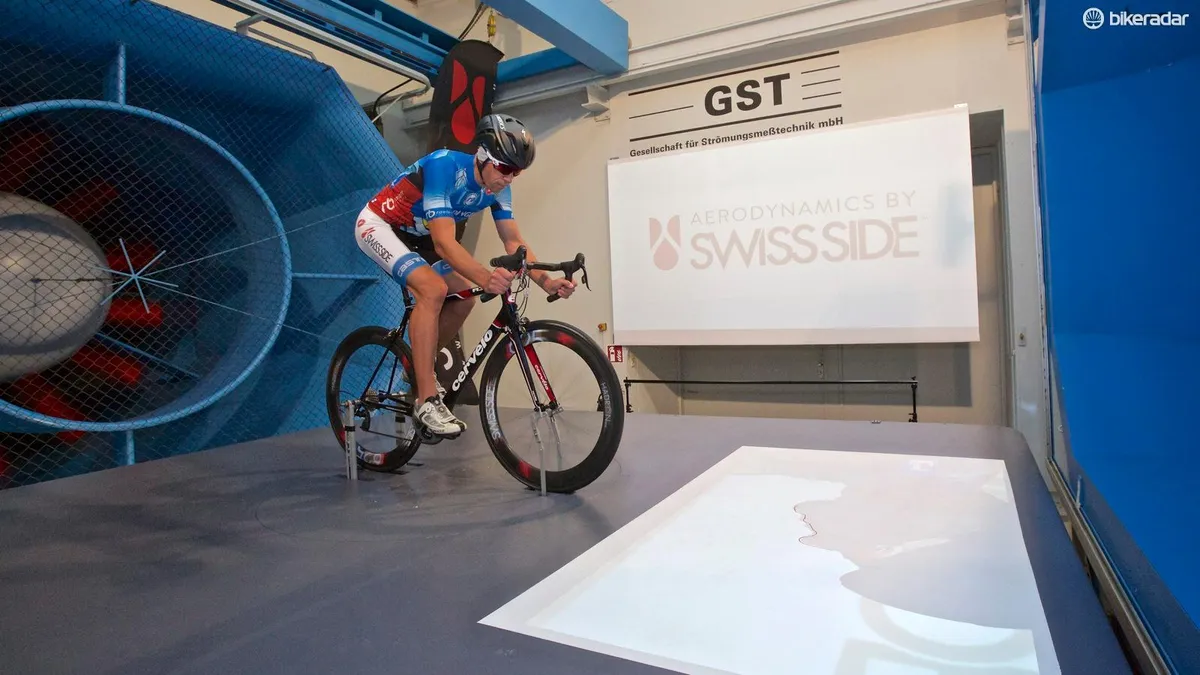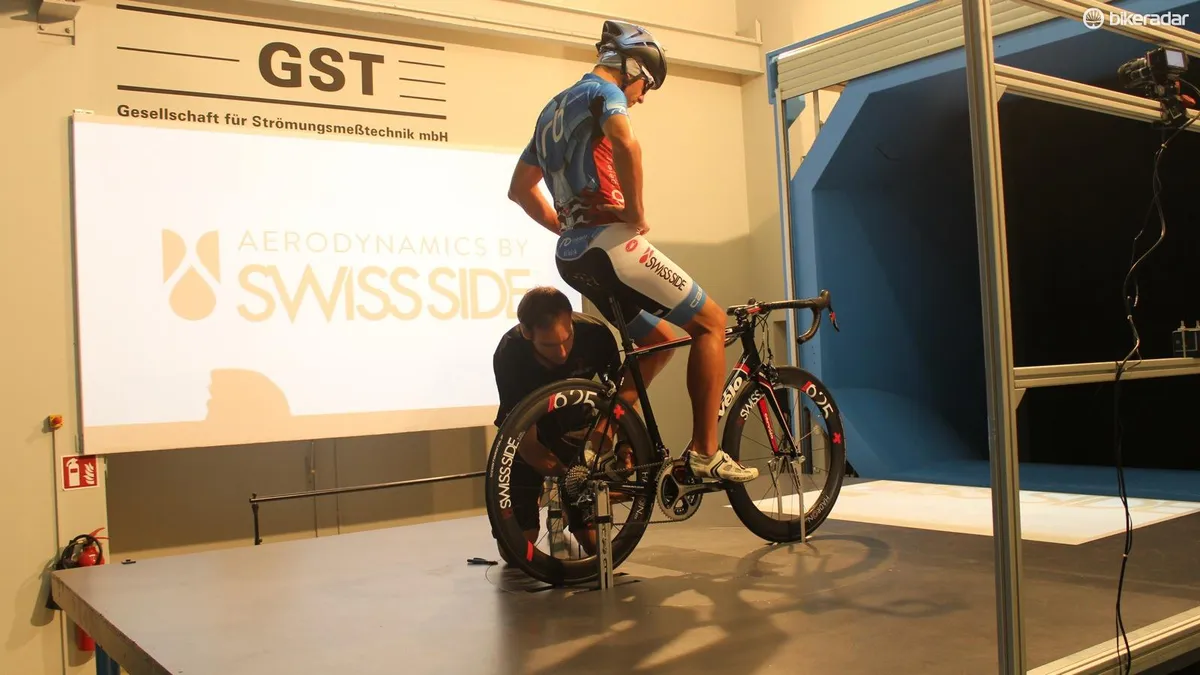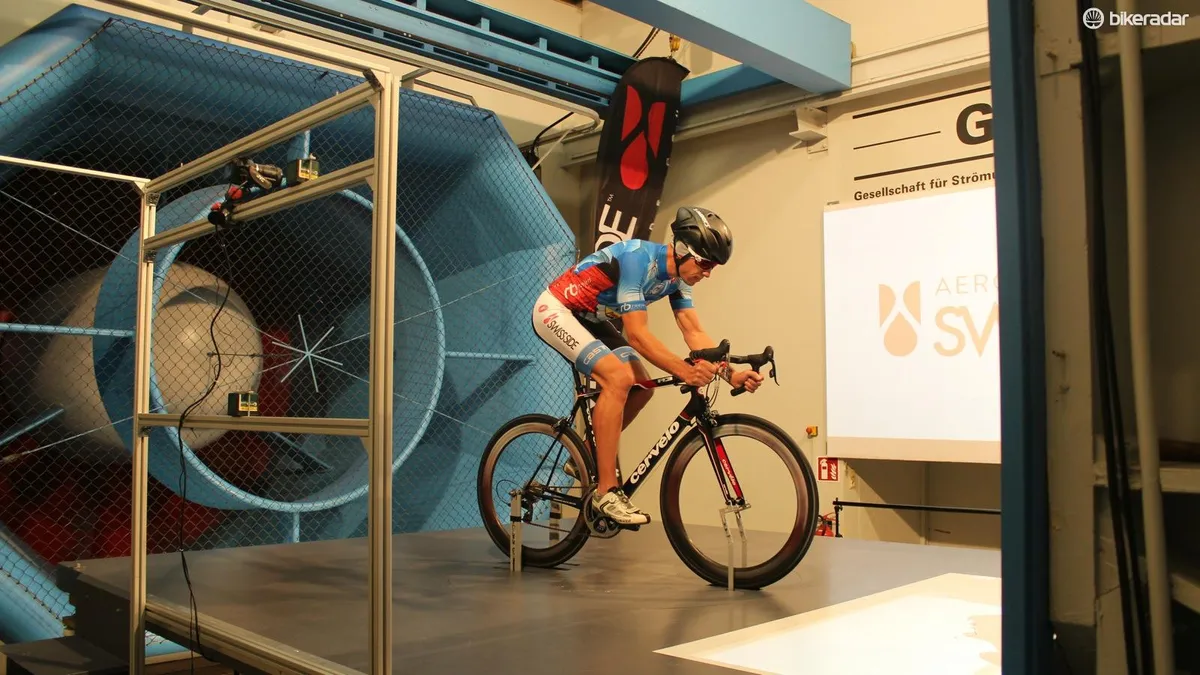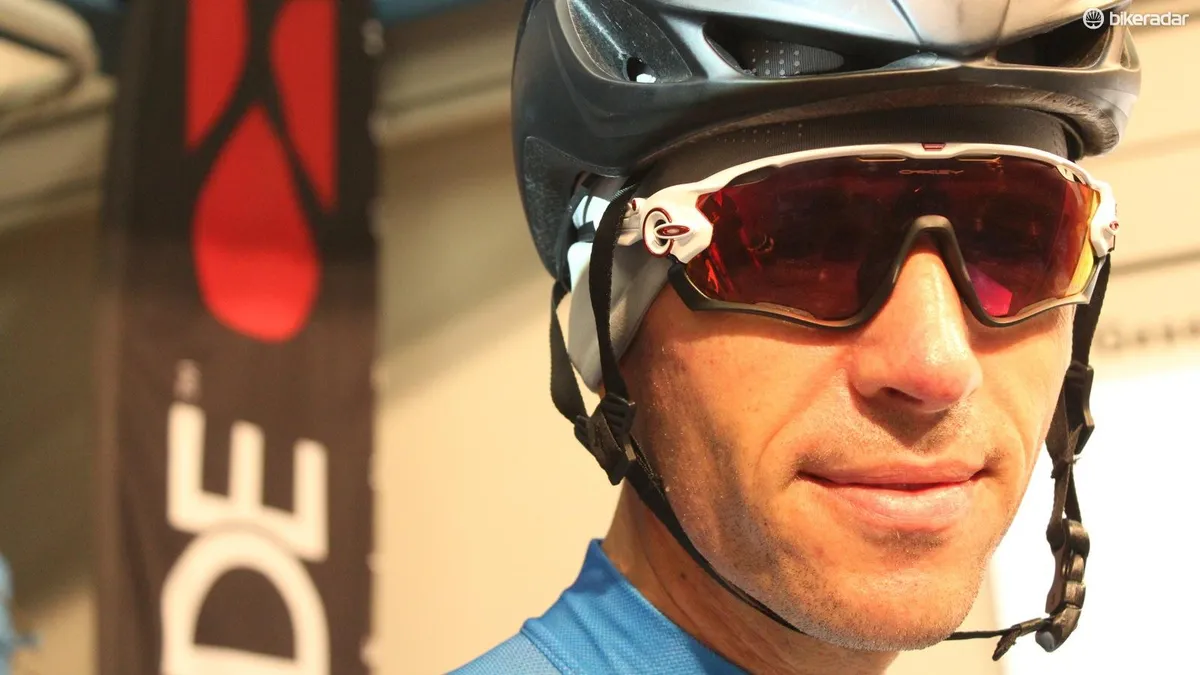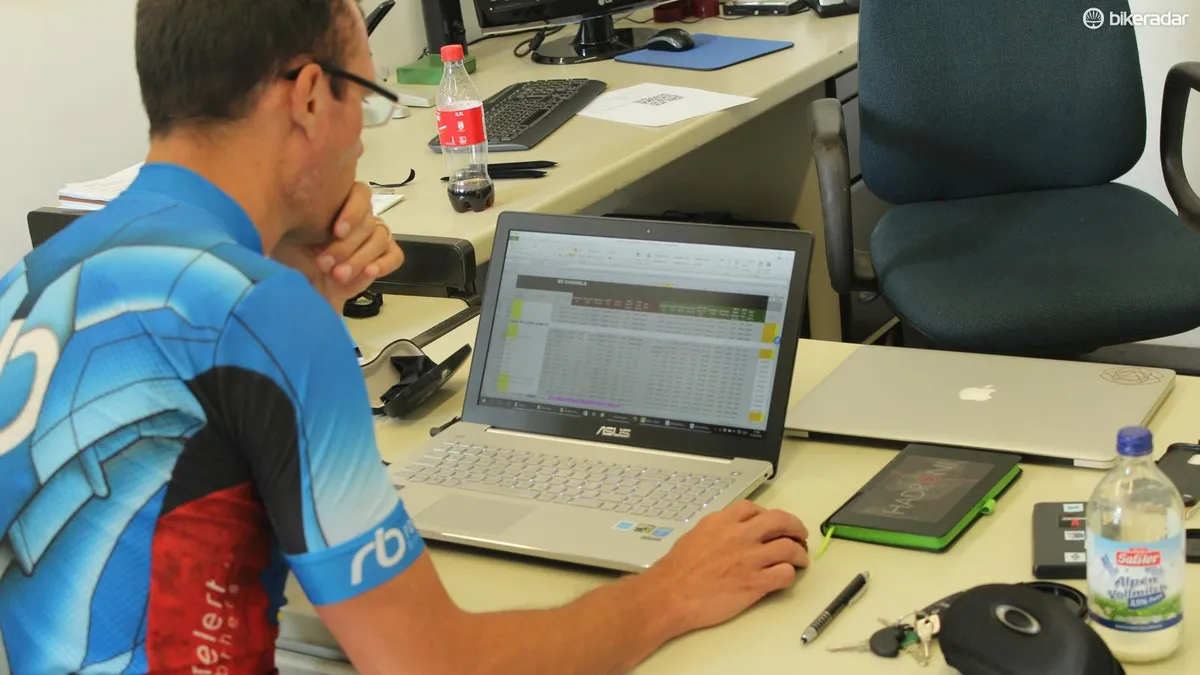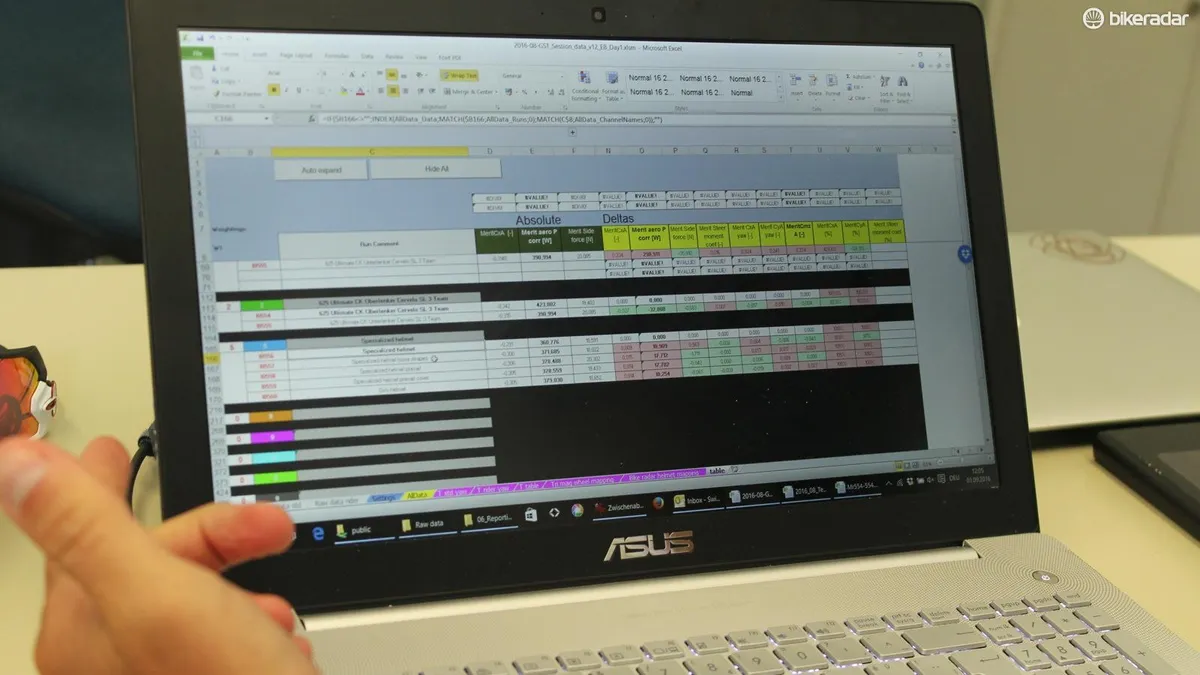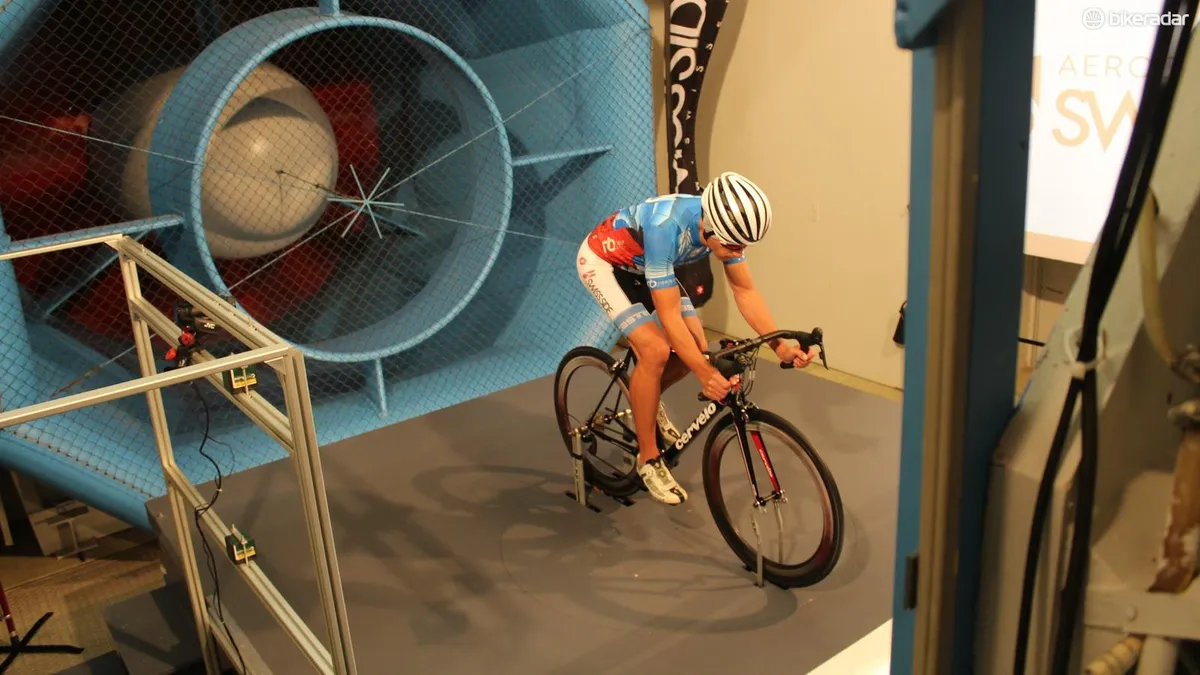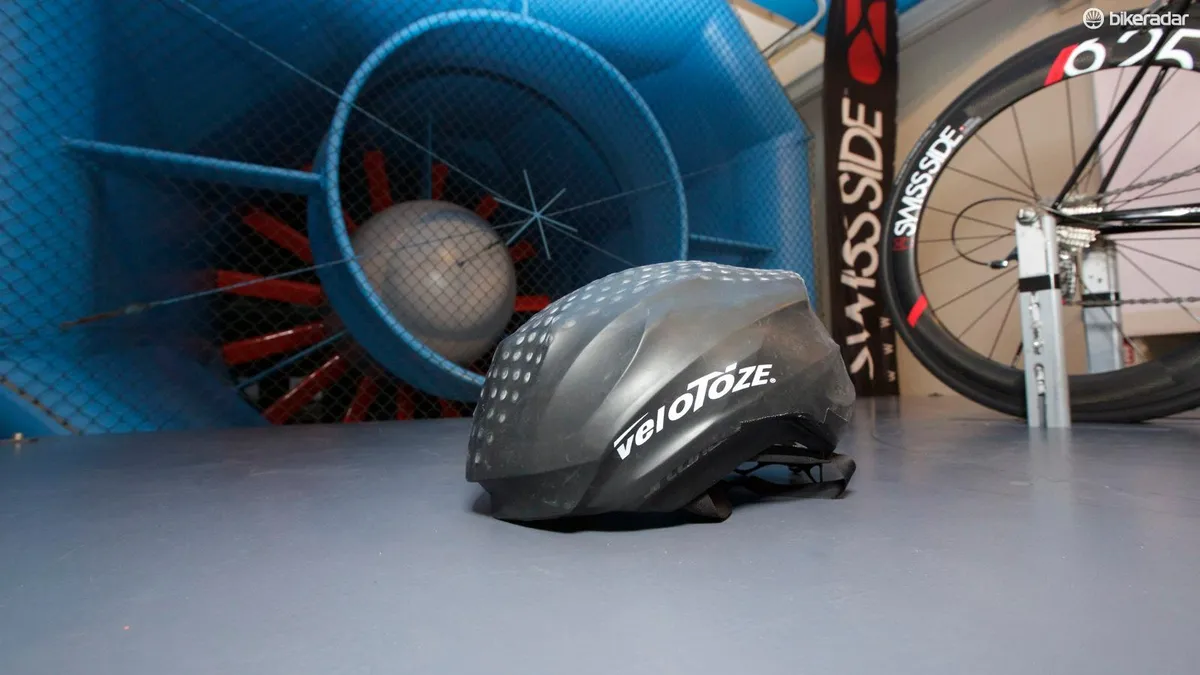Can you ruin an aero road helmet by wearing it wrong? And can you make a regular road helmet aero by covering the vents? I went into the GST Wind Tunnel in Immenstaad, Germany with upstart wheel company Swiss Side to find out.
- How to ride faster instantly without going harder
- Best aero road bikes: 13 of our top picks
- Make aero gains at any speed - video
Swiss Side is a consumer-direct wheel company founded by former Formula 1 aero experts, and recently it helped Cube create what the bike maker calls the fastest time trial bike in the world, the C:68.
I brought three helmets to the GST tunnel and asked Swiss Side to answer my questions with testing.
Yes, you can easily compromise an aero helmet
Bell Helmets engineering manager Ben Penner recently told me that you can save 7-9 watts just with flat helmet straps versus straps that stick out and flap in the wind. I asked Swiss Side to test an aero helmet (a medium Specialized S-Works Evade) worn normally with properly tightened straps worn under the sunglass arms, and then with loose straps worn over the sunglass arms.
In averaging the results of multiple tests at 45kph, and weighting the head-on drag numbers slightly over the 10-degree yaw numbers, Swiss Side found baggy straps to cost 4.4 watts.
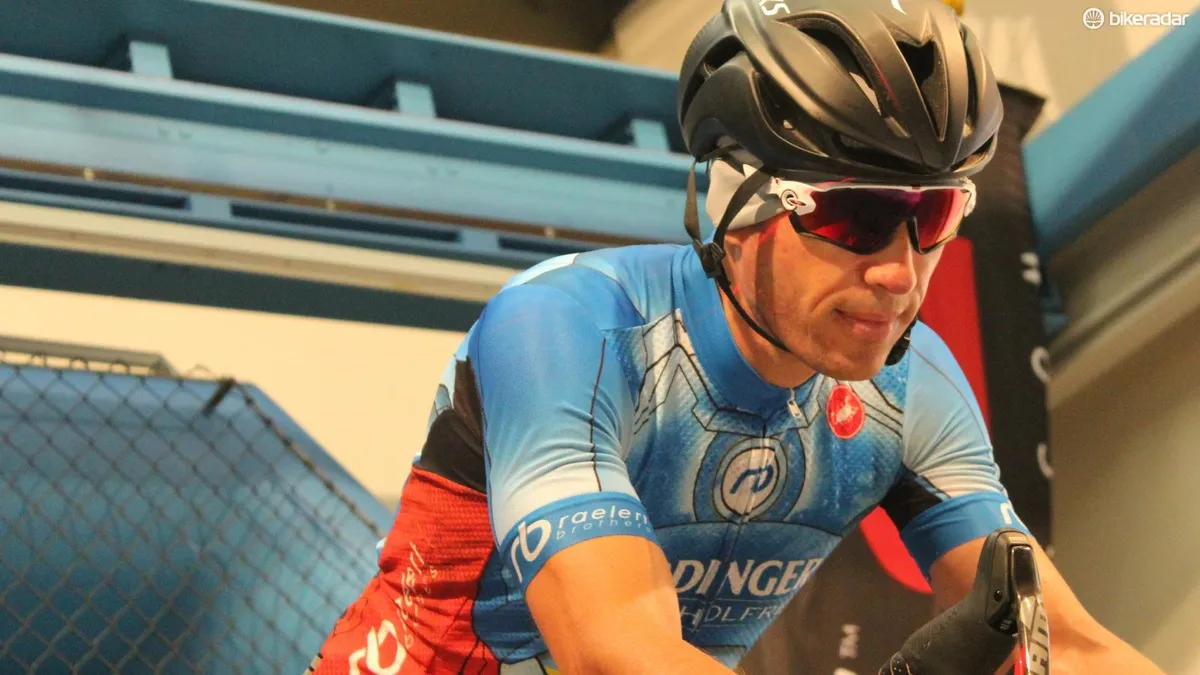
For context, we tested a standard road helmet (a medium Specialized S-Works Prevail) and found it to be 11 watts slower than the Evade aero helmet using the same protocol. A medium Giro Cinder (think a more-affordable, less-ventilated version of the Synthe) measured the same as the Prevail.
I also took a foam head to Germany for testing, thinking that removing the human variable would be a good thing. But the Swiss Side team argued that the helmets were designed to function on a person on a bike, not on a foam head in isolation, so we should test them according.
As such, the helmets were tested by Swiss Side aerodynamics team leader Christian Kleiner, who maintained his position on the bike by zip-tie'ing his crank to his bike, holding his upper body still and — this was a new one for me — keeping his face still with a real-time video projection on the ground in front of him and an outline traced with marker on the ground. Swiss Side also had a laser line on the side of his head for reference.

Total wattage (required to maintain 45kph) for Kleiner on his Cervélo S3 Team with Swiss Side 625 Ultimates in his race position and the Evade helmet was 339 watts. Saggy straps added 4.4 watts and switching to the standard Prevail and Cinder helmets added roughly 11 watts.
Once back home in Colorado, I ran these results by the pertinent experts at Specialized and Giro, who said the numbers generally jive with their findings.
As for the basic split between an Evade and a Prevail, Specialized's head of applied technologies Chris Yu said, "that’s almost exactly what we’ve seen on average over years of accumulated testing with athletes. We quote a difference of 46sec saved over 40km, which aligns very closely with your 11 watts at 45kph figure."
He went on to say that "Sloppy fit with baggy straps and/or an extremely tilted angle will cause a pretty big aero drag variation in most helmets."
Bottom line: Tighten your helmet straps and put your sunglasses on after you buckle your helmet. There is no need to choke yourself, just don't have the straps flapping in the wind.
No, you can't easily make a regular helmet aero with a cover
One oft-repeated saying for aerodynamic helmets is that faster is usually hotter, meaning that ventilation and fast airflow are often at odds. So, if you just plug the holes on a normal helmet, will that make it faster?
About a year ago while testing various positions with the Alphamantis Aero Track Software with ERO Sports, I tested a Lazer helmet with and without a snap-on shell. Using the real-time aero software on the LA velodrome, we were unable to determine any meaningful difference when taking into account the test protocol's margin of error.
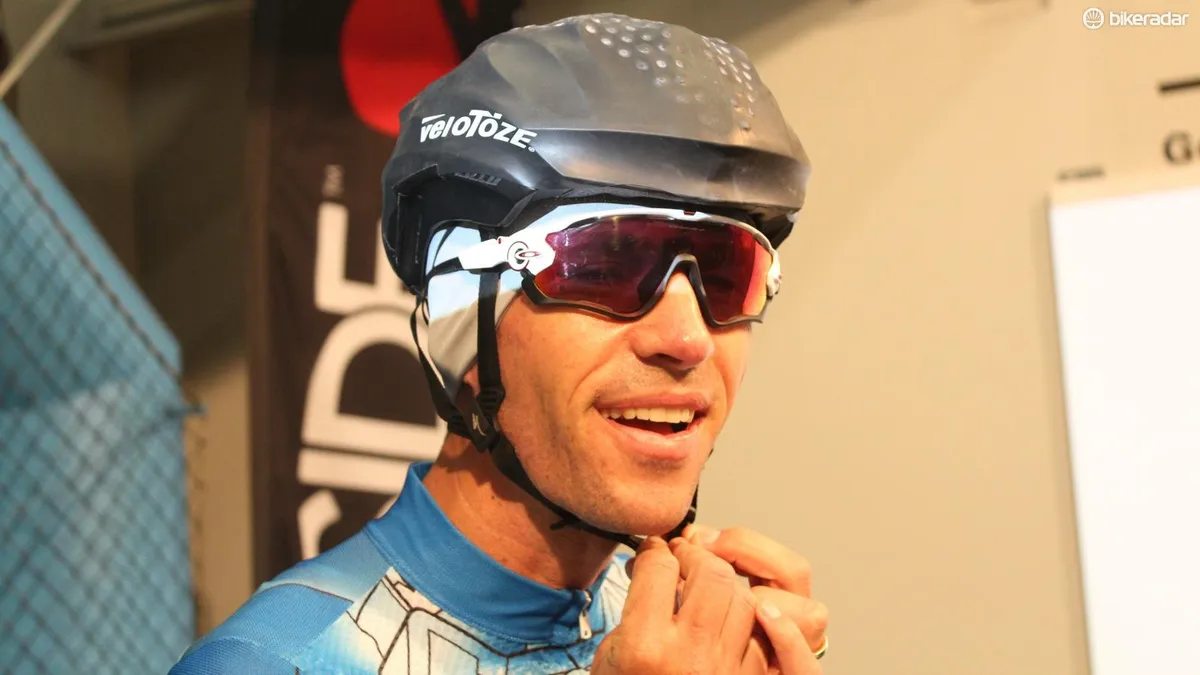
At the GST tunnel, I wanted to test this again, so we ran the Prevail with and without a VeloToz rain cover, which stretches easily over helmets to keep the elements out. The difference? Less than 0.4 watts.
Again, I asked Specialized's Yu about this. "I haven’t seen a standard road helmet benefit from a simple cover yet," he said. "The majority of the aero drag from these helmets comes from the shape, which a cover doesn’t necessarily help with. In fact, in some cases the cover makes the helmet slower by blocking some of the through-flow."
Yu said the basic split Swiss Side found between the aero helmet and the road helmet made sense.
"A well designed aero helmet versus a typical road helmet will be in the 30-45sec saved over 40km," said Yu, adding that such a split translates to 7-10w at 45kph. "However, we’ve also seen some helmets labeled as aero that perform essentially the same as a traditional road helmet. The details matter quite a bit."
Giro's senior director of R&D for helmets Rob Wesson said that the GST numbers for the differences between aero and standard helmets and good and bad strap management were within 10 to 15 percent of what Giro has seen in its studies.
"We tested a Lazer with and without its plastic cover as well as a Giro Aeon with and without a fabric cover in the wind tunnel back in 2012 and found a slight improvement of 1.5 – 2 watts," Wesson said. "Although both helmets with covers were still slower compared to other vented road helmets, so it’s more than just a vent-free surface that matters; the overall shape and frontal area are more important."
Bottom line: Yes, good aero helmets actually do work. The overall shape and design of the helmet determines how the air flows around it (or through it) more than just the presence or absence of vents. Granted, not all aero helmets are created equal, nor all standard road helmets. But a fast helmet is more than just a helmet with minimal venting. Helmet covers are great for keeping the rain out, but no, they won't turn you into Tony Martin.
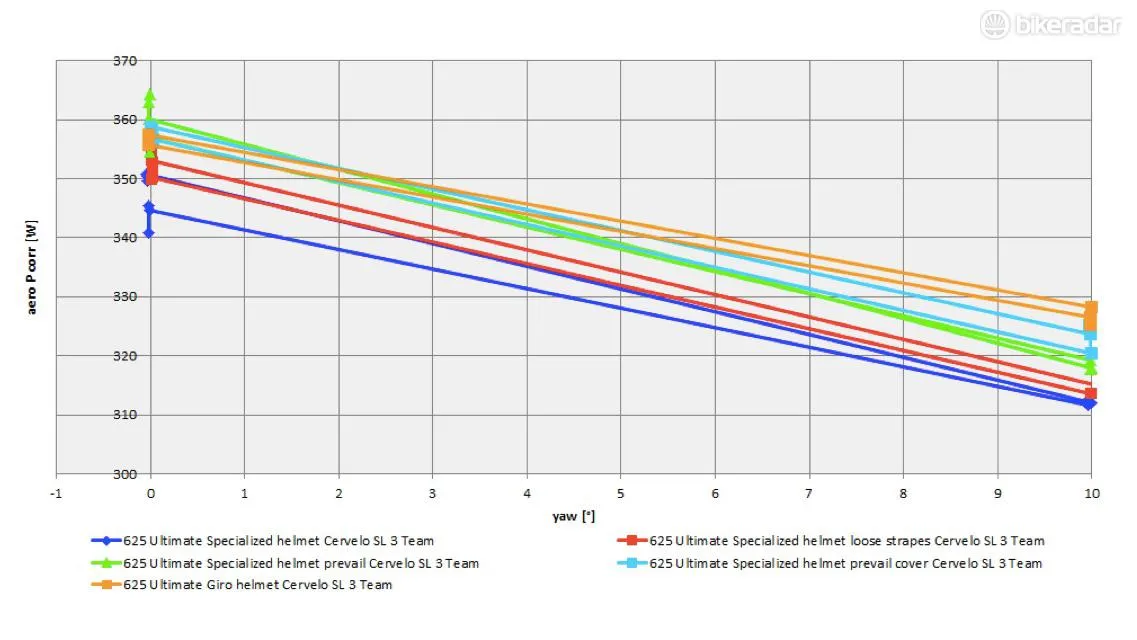
Context: You are the biggest drag
In the bigger picture, you, the rider, account for about 80 percent of the total bike/rider aerodynamic drag, so how you hold your head is arguably more important than what you put on it.
How to ride faster instantly without going any harder
More broadly, how you hold your body contributes greatly to how much power you have to produce to ride at the same speed. Changing body position, from sitting up high to tucking down low, can make more than a 100w difference for an average male rider going 40kph.

Swiss Side technical director Jean-Paul Ballard said his young company looks at bike components the way they did with auto parts when working in elite car racing. "As a wheel brand, we definitely take a Formula 1 approach. The object is just to take the quickest lap possible. It doesn't matter if you do that with changing downforce, mechanical drag, or whatever," he said. "It’s not about one particular parameter. It’s about the complete package."
In designing wheels, Swiss Side engineers looked at rim aerodynamics extensively, but also at stabilization characteristics so riders can stay comfortable. Having a wheelset or a frame that's fast in a wind tunnel is one thing, but if wind gusts cause the rider to clench and stop pedaling, or even sit up, then you've lost the battle.
"How the rider reacts to wind input is everything," Ballard said.
Conclusion
Back to helmets, the takeaways from the Swiss Side testing were pretty clear. One, put your helmet on first, then your sunglasses, and keep those helmet straps flat. And two, if you have a standard road helmet and you want to make it faster, the most effective solution is to just buy an aero helmet — and save the rain cover for rainy days.
